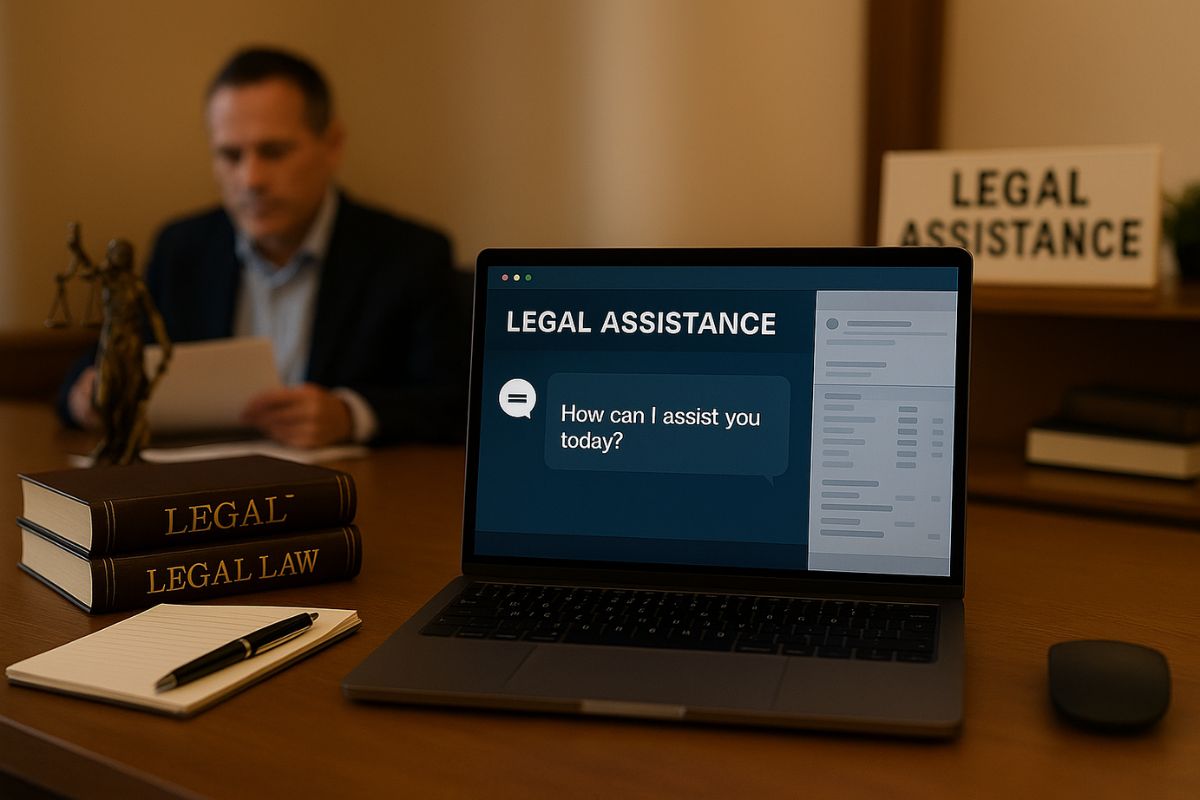
Use Chatbots to Triage Legal Requests
Legal organizations face a growing number of inquiries every day. From housing disputes to employment issues and immigration concerns, people often reach out unsure of what kind of help they need—or whether they qualify for support. This puts pressure on already overstretched staff and slows down the process of getting help to those who need it most.
That’s where chatbots come in. These automated systems can handle common questions, collect useful information, and help route people to the right place—all before a human ever gets involved. Used thoughtfully, chatbots offer a simple way to speed up intake while making legal help more accessible.
Why Chatbots Make Sense for Legal Triage
At the first point of contact, most people don’t know how to describe their legal problem. They may not understand the terms lawyers use, or they may struggle to explain their issue clearly. A chatbot can guide this conversation step by step.
Instead of filling out long forms, users interact with a chatbot that asks plain-language questions. It might start with “What brought you here today?” and then follow up based on the response. This helps gather the basics: what the problem is, where it’s happening, and whether the person has already taken any steps.
By using a decision tree or a trained model, the chatbot can assess urgency and direct the user to the right resource. If it’s something that needs human attention, the request is flagged and passed to a staff member with all the collected details. If it’s something straightforward, like finding a housing rights document, the bot can send a link directly.
This saves time, reduces waitlists, and ensures staff spend more time on complex cases rather than answering the same questions every day.
Reducing Barriers to Legal Access
Legal aid groups often serve people in crisis. These users may be stressed, unfamiliar with legal systems, or struggling with language and access. A chatbot gives them a way to engage at their own pace, anytime, without waiting on hold or navigating confusing systems.
Chatbots can offer multilingual support, adapt to the user’s level of understanding, and guide them gently through what would otherwise be intimidating forms. For people who hesitate to speak with a stranger about personal issues, a bot can feel like a low-pressure first step.
That first interaction matters. If someone gets help quickly and feels heard—even by an automated system—they’re more likely to stay engaged and follow through.
Gathering Consistent Information
Another advantage of using a chatbot for intake is consistency. Human intake workers each have their own style, tone, and process. Some may skip questions. Others may spend too long on parts that don’t matter for triage. Chatbots ask the same structured questions every time.
This makes it easier to prioritize requests. Staff receive cleaner, more organized data, which helps with scheduling, follow-up, and case tracking. It also means that decisions about urgency and eligibility are based on the same criteria for everyone.
When used across teams, chatbots can reduce confusion and help build a shared understanding of how cases are evaluated. Over time, this leads to better data about what services are in demand and where gaps exist.
Supporting Staff, Not Replacing Them
Chatbots don’t replace legal professionals. They support them. In a busy nonprofit or legal clinic, a well-designed chatbot becomes a team member that never sleeps. It handles the repetitive work—collecting names, contact info, and basic facts—so that lawyers and caseworkers can focus on analysis, strategy, and advocacy.
This also helps staff avoid burnout. Answering the same intake questions all day can be draining. By automating the routine parts of intake, organizations can shift that energy to the parts of the job that matter most.
Some organizations even use chatbots to train new staff. By reviewing the questions bots ask and the logic behind them, new team members learn how to identify legal issues and practice active listening in a digital format.
Challenges and Things to Consider
Not every chatbot is useful. A bad design can frustrate users or give out incorrect information. That’s why building a legal chatbot requires input from both technical and legal experts. The language must be clear and accurate. The logic must reflect actual intake rules. And there must always be a way to escalate to a human if needed.
Privacy is another concern. Legal conversations involve sensitive details. Chatbots must follow strict security standards, and users need to know what data is being collected and how it will be used.
Testing matters too. Piloting a chatbot with a small group of users can reveal gaps in logic or unclear wording. Feedback from real users helps refine the experience before it’s rolled out more widely.
Real Examples in Action
Several legal aid groups have already started using chatbots with success. Some use bots to screen for eligibility before offering appointments. Others walk users through housing or immigration problems, then hand them off to a paralegal or attorney. The bots don’t give legal advice—but they do prepare users to have a more productive conversation when they speak to a person.
In places where legal resources are stretched thin, this kind of technology can mean the difference between someone getting help and being turned away.
Chatbots aren’t a magic fix, but they can be a practical tool for legal service providers trying to manage demand and connect people with help. When designed with care, a chatbot becomes more than a digital assistant—it becomes a bridge between people and the support they need.
